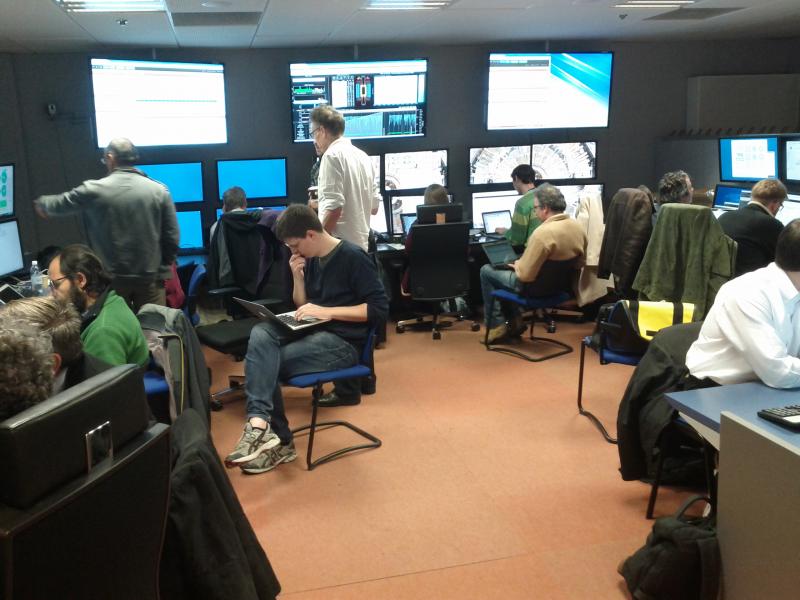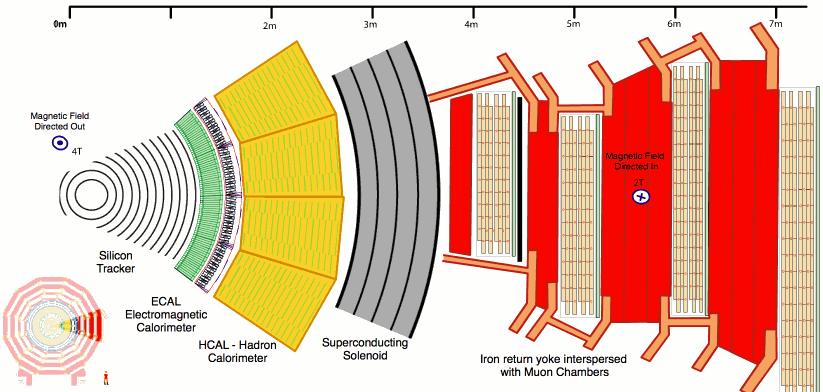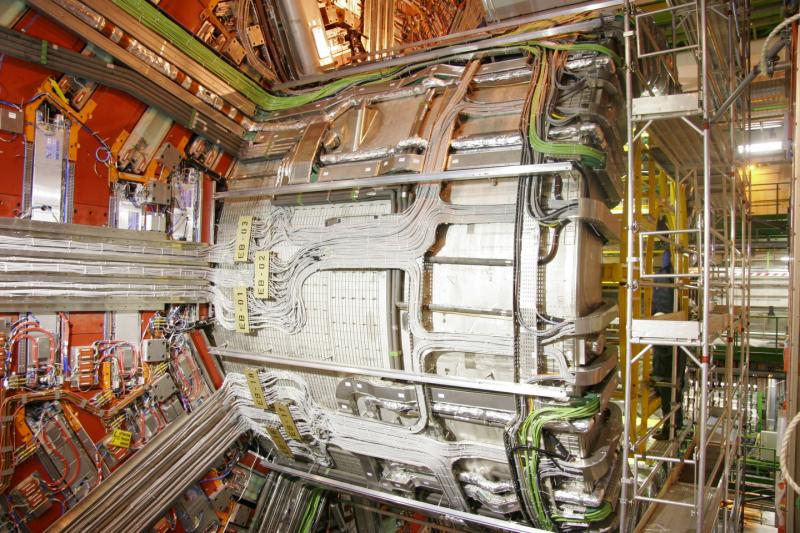Monday morning. The control room is buzzing as the “Magnet Test” is underway at Point 5, home of CMS on the LHC ring. This is the first time that the CMS magnet has been turned on since February 2013, and an enormous amount of work has happened since then. It’s a real test! We have had a long series of global runs to commission the detector in 2014, but the heightened activity around the powering of the solenoid itself is noticeable. It is a true focal point of activity for Technical Coordination, Run Coordination, subsystem experts, offline computing, CMS management and other teams. In many ways, it can be thought of as “the run” for 2014.

In order to know what happened at the heart of each collision inside CMS, we have to identify the particles produced in the collisions and measure their properties. A powerful magnet is needed to discriminate positively charged particles from negatively charged ones (electrons vs positrons, for example), which bend in opposite directions in the same magnetic field. The magnet also helps measure the momenta of the particles: faster particles bend less in the field while slower ones bend a lot. The solenoid of CMS is the largest superconducting solenoid ever built and produces a field of 3.8 T, with 18,000 A of current running through the niobium-titanium fibres within it.

Now, back to the magnet test. As a result of a coordinated effort over a period of months by the CMS operations teams, we achieved a stable state of running over the weekend, calmly collecting cosmic rays easily with the CMS detector. Then early on Monday morning, the action began. The experts start to increase the current in the magnet, the situation evolves, and questions start flowing… The field just changed, is anything moving? That expert just came up with a good idea for a test run, can we do that? The high voltage just tripped, why is that? This is an interesting problem, are the experts looking at it? We are running great, how can we improve the operation to make this automatic?
My colleague Erik Butz, the CMS Strips Operation Manager, remarked, “It’s just like the old days, working in the control room is long periods of complete and utter boredom interspersed with the occasional bursts of furious activity.” A large number of things all have to work for successful operation. Thus, the modus operandi is: try to get things moving, something isn’t quite right, wait for the expert to resolve the problem of the moment, then that gets resolved... and then pow, data start flowing; experts look at plots for the CMS sub-detectors, trigger, and data acquisition; operations are in full swing!
Thanks to the effort of all the teams, the magnet successfully reached full field (3.8 T) early on Monday evening. At this point, the magnetic field contains as much energy as a fully loaded mid-sized jet flying at altitude, all the more reason for the extensive monitoring and control systems in place and fully operational.
The plan is to keep the magnet in this state for the next 24–36 hours to take data with the CMS detector in “physics” mode. Wish us luck!
The views expressed in CMS blogs are personal views of the author and do not necessarily represent official views of the CMS collaboration.

